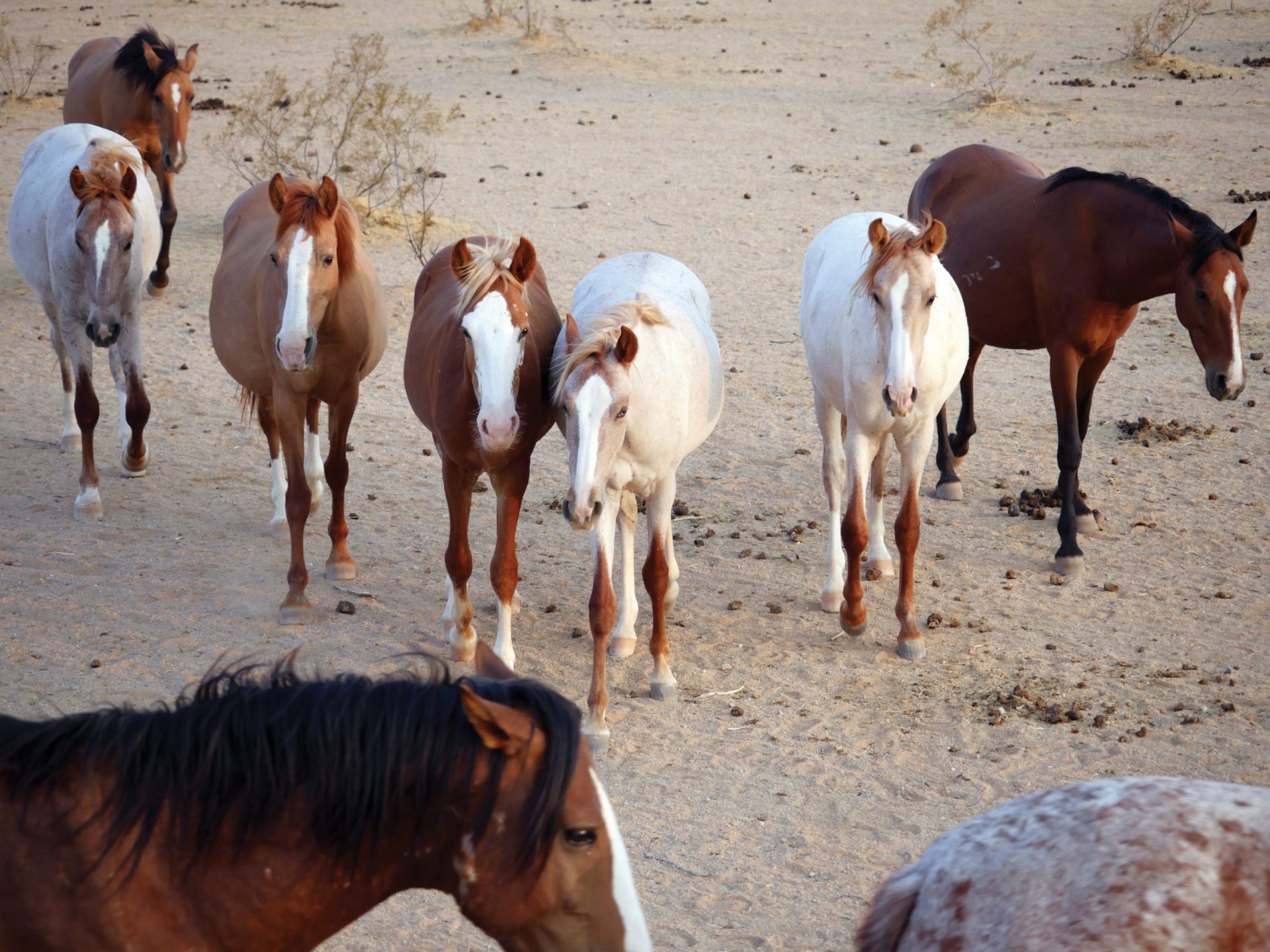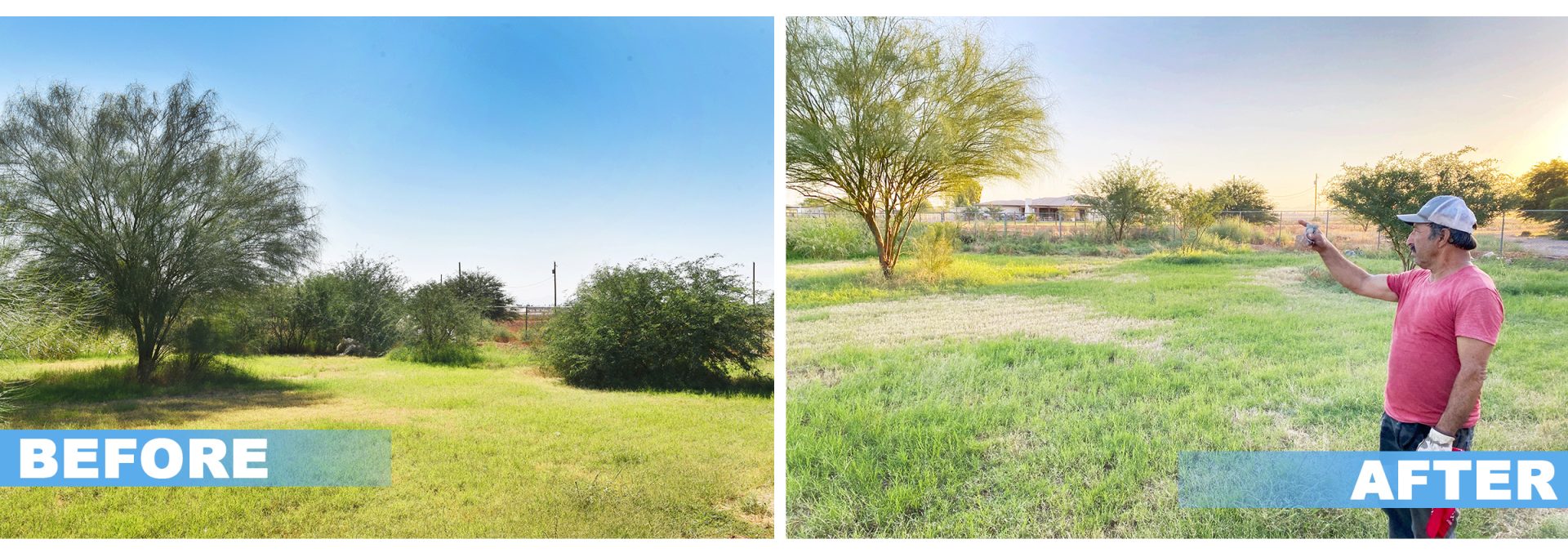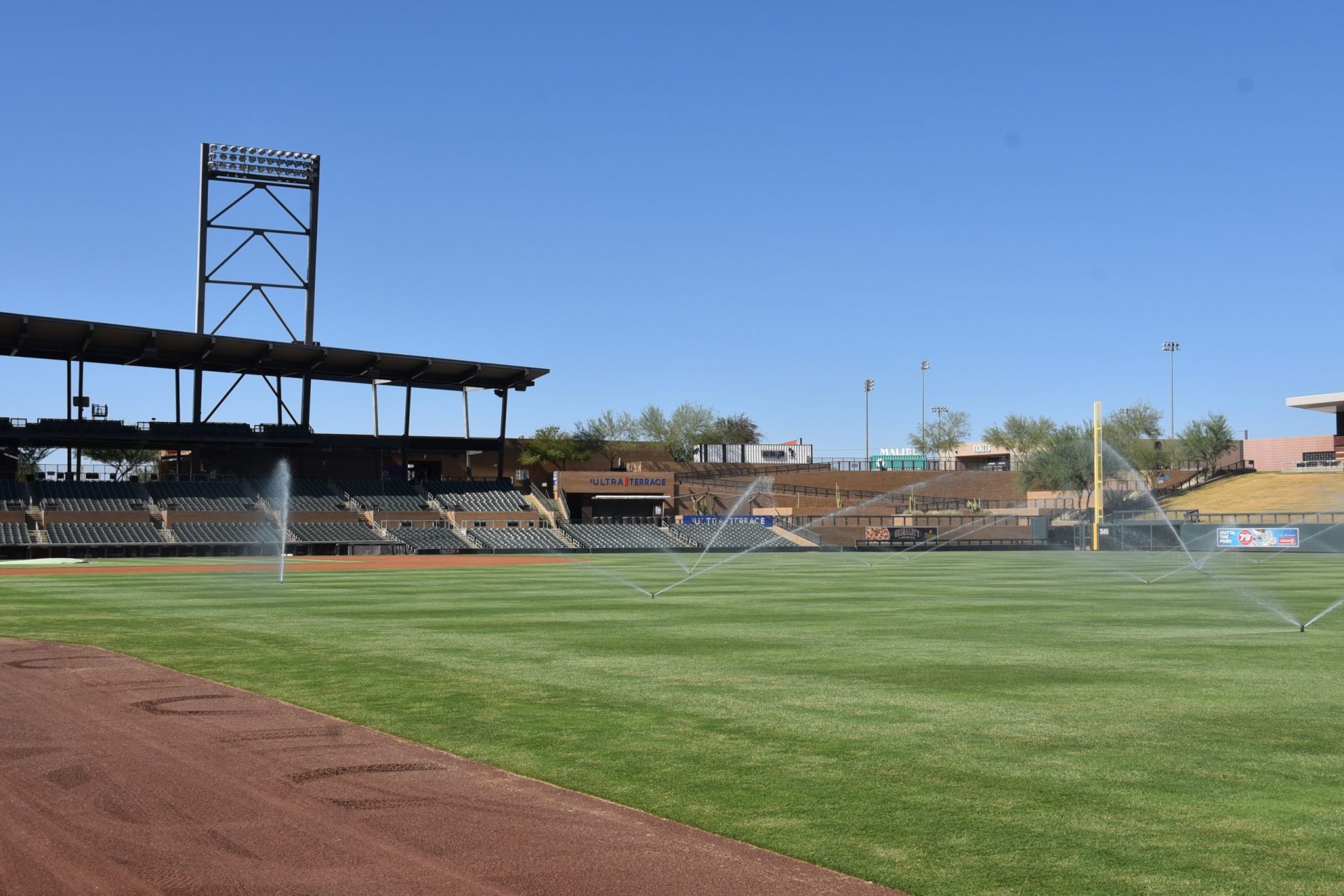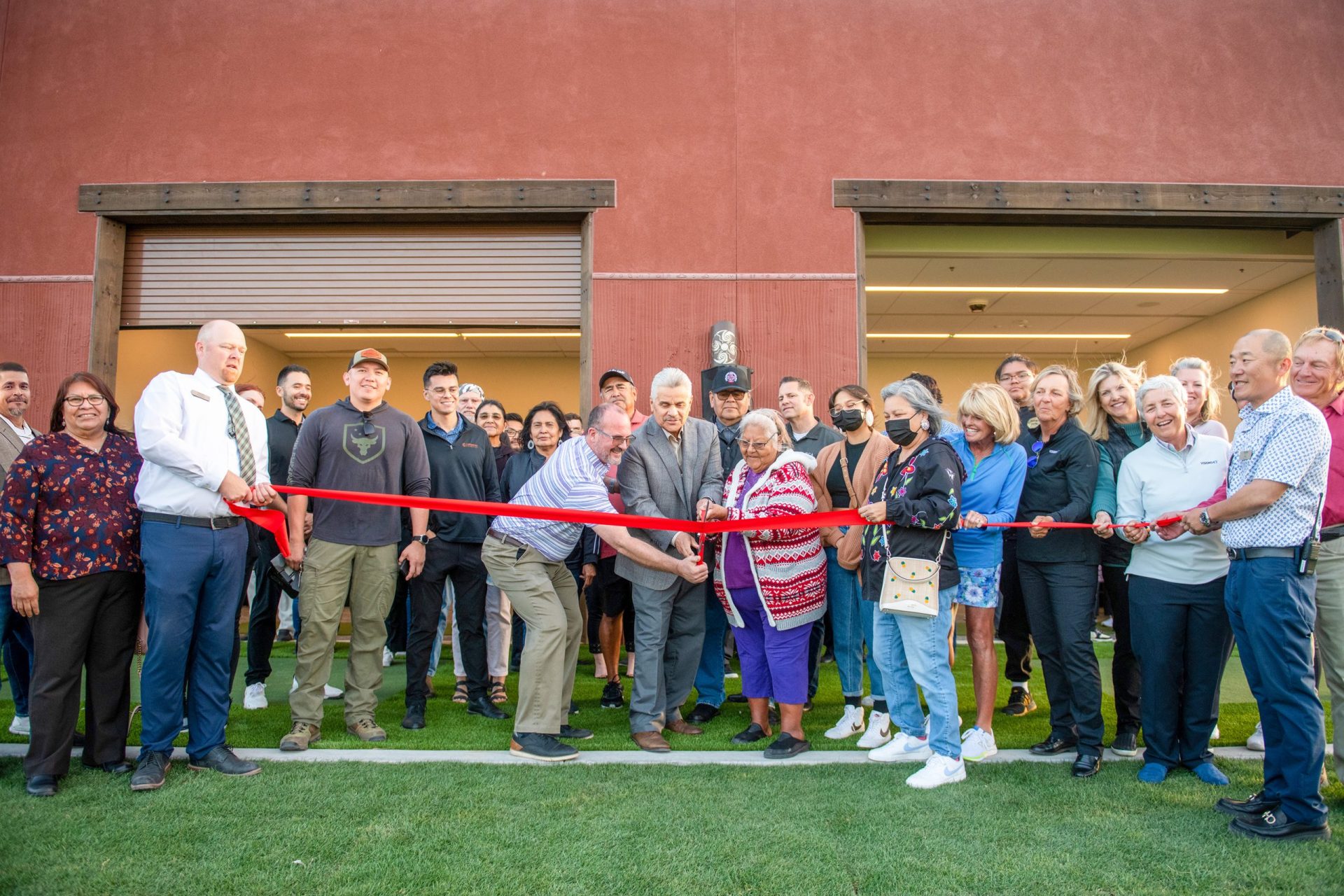VIEWS: 5145
October 14, 2020Caring for Protected Wild Horses Takes Dedication
The Salt River Pima-Maricopa Indian Community has about 20,000 acres of open range land that many animals call home, from bald eagles to coyotes to javelinas and bobcats. Brian Gewecke from the Range Management Program and Environmental Protection and Natural Resources (EPNR), which is part of the Community Development Department (CDD), has the important role of preserving, protecting and revitalizing the land and the animals within those boundaries.
One group of residents that gets a great deal of attention are the Salt River wild horses, or “kaviyo” in O’odham and “qwaqt” in Piipaash. These wild horses have been an important and protected part of the history and culture of SRPMIC, and Gewecke especially takes their well-being very seriously. Early in the morning, he gives the horses a supplemental feeding, if needed.
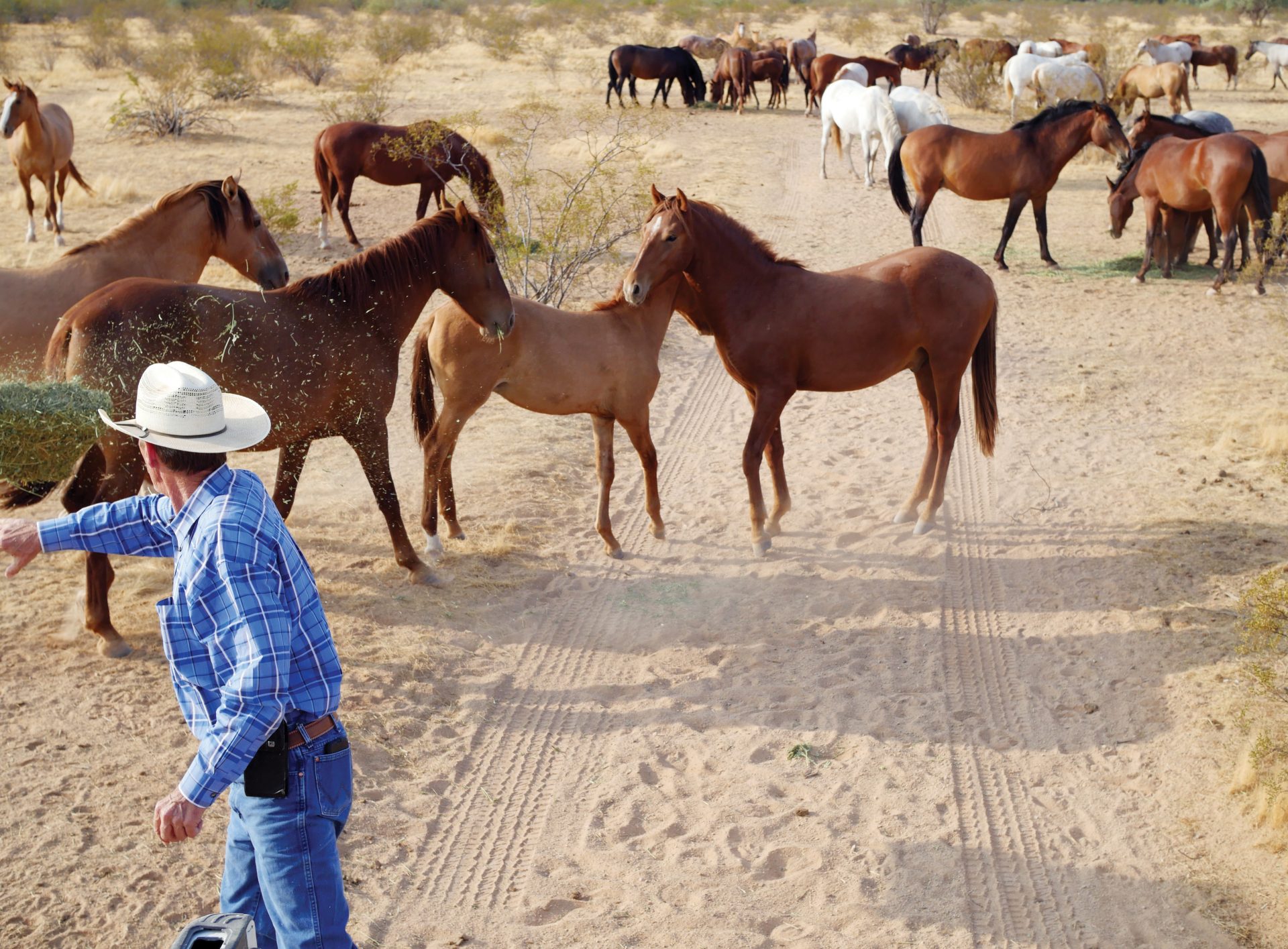
Brian Gewecke from the Range Management Program and Environmental Protection and Natural Resources (EPNR) gives the wild horses a delicious early morning snack.
“On a typical day—and I do this every day—I will take a look at everyone [the horses] to see if somebody needs help,” said Gewecke. “We have horses that are getting older, and when a wild animal [gets] really old, usually [they] lay down and something often eats them.”
One of the main goals in the management of pain or injury in the horses is to try to minimize any suffering. For example, a young horse may have injured itself badly, perhaps sustained a fatal injury, and it may need to be humanely euthanized. This is no doubt one of the toughest but most compassionate tasks of the Range Management Program.
A mare (an adult female horse) that is getting ready to have a baby may need a daily checkup to make sure she is coming along all right with the pregnancy. Another part of managing the herd is providing birth control, one of the processes that SRPMIC is taking the lead on as a tribal community. The CDD/EPNR Range Management Program uses porcine zona pellucida (PZP) as birth control. The zona pellucida is a membrane that surrounds all female mammalian ovaries, and porcine is Latin for “pig.”
“We could have used hormones, which causes behavioral changes, and we could have used some drugs that would last for multiple years, but after much research it was determined that PZP was the best option,” Gewecke said.
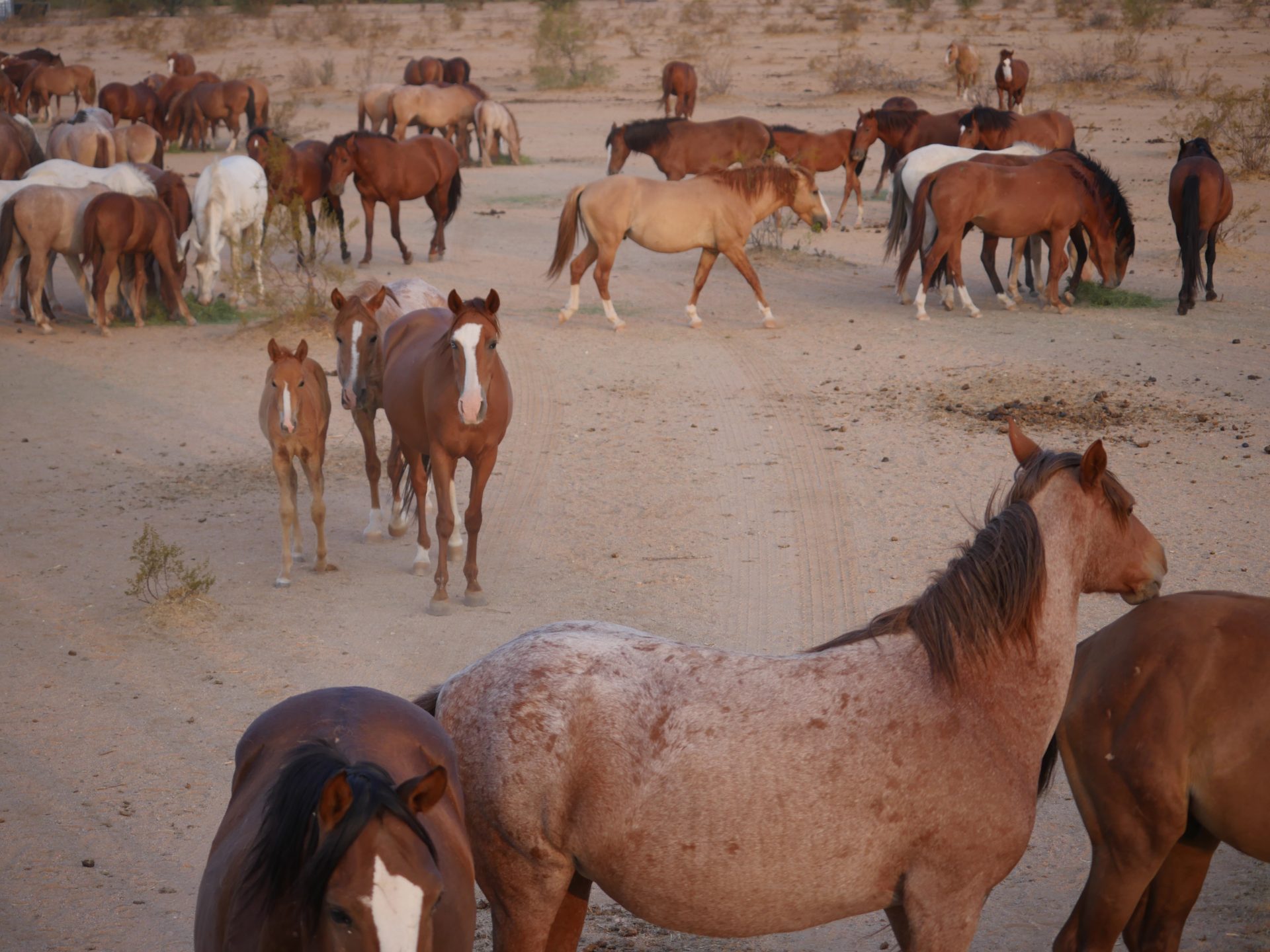
The goal of using PZP is to keep the entire social system of the horses intact. This form of contraception lasts for only 12 months, and every year Range Management has to go out and re-inject the mares. Mares are not physically ready for pregnancy until they are around 4 or 5 years old, so they are injected with PZP every year from age 2 to 5. Gewecke said that this way the herd reproduction numbers can be controlled, which is important for the management of the herd.
“Our best practices note that we don’t want babies having babies or grandmas having babies. We’ll allow them to have two genetic contributions, which is essentially giving birth a couple of times. And then they are contracepted for the rest of their life,” he said. Currently there are on average four to six babies (foals) a year at SRPMIC, which is ideal. About that number of wild horses on the Community die naturally of old age, so the steady number in the herd is maintained.
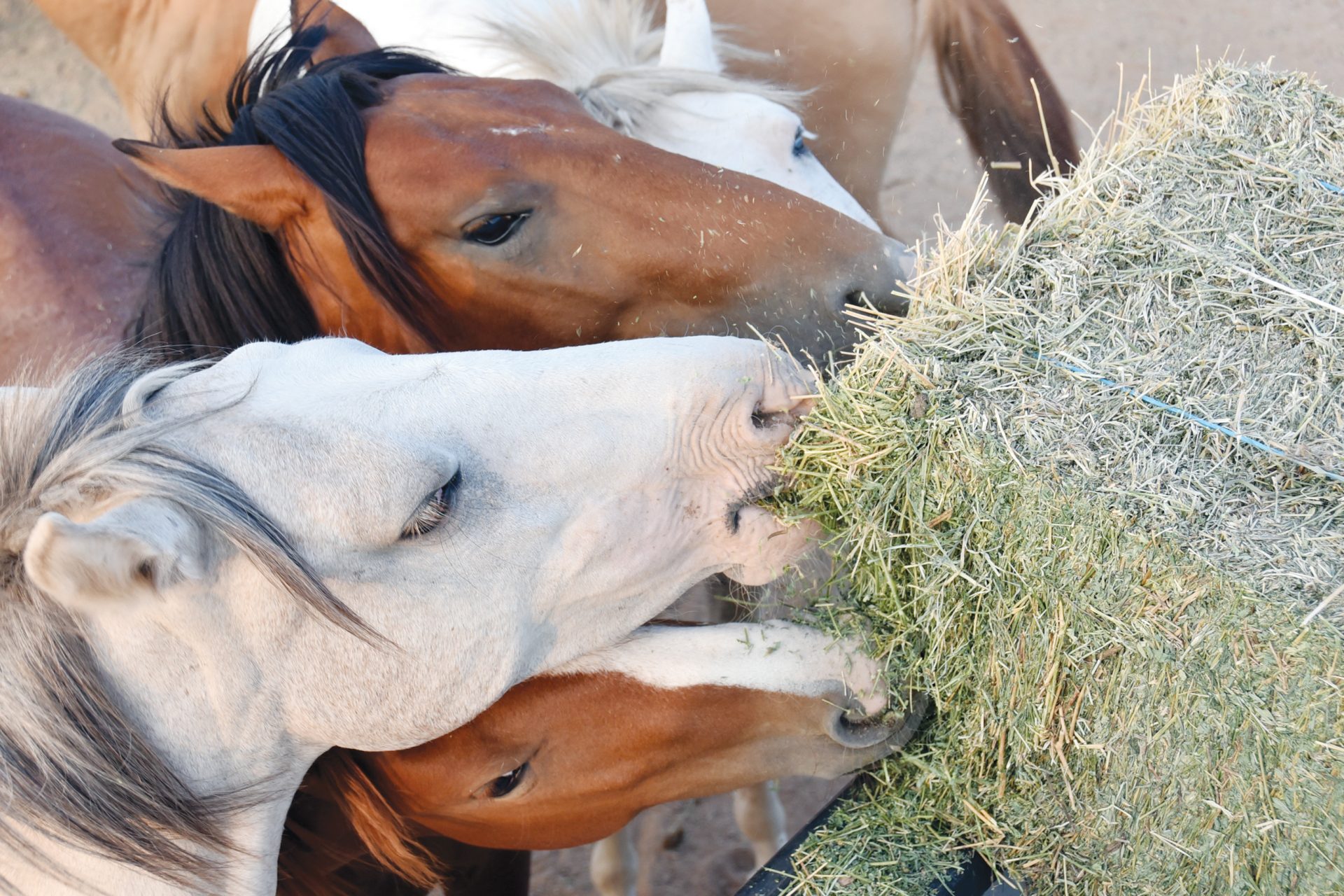
The horses fight for a spot to eat from a block of fresh hay.
So, what kind of breed are the wild horses? Gewecke said that they aren’t a breed, but a type called Spanish barb, which has a rich history that started in Europe before their journey across the Atlantic Ocean in the early to mid 1500s, eventually ending up here at SRPMIC and in other areas throughout North America.
“The Spanish were coming into the area, and because a large part of Mexico was controlled by Spain, Veracruz (Mexico) was the port that all of the conquistadores came through,” said Gewecke. “When the Spanish were getting ready to make the trip over here, they had plenty of time and resources to fill their wooden ships full of fresh water and grain for all of the horses and livestock that they were bringing over. They used the horses for travel and livestock to feed their troops.”
However, when it was time to go back to Spain, the Spanish didn’t have enough fresh water or grain to take all the horses back with them. They would typically take the officers’ horses back, as they were of the Andalusian breed. According to Gewecke, the Spanish barb were the horses that were left in Veracruz.
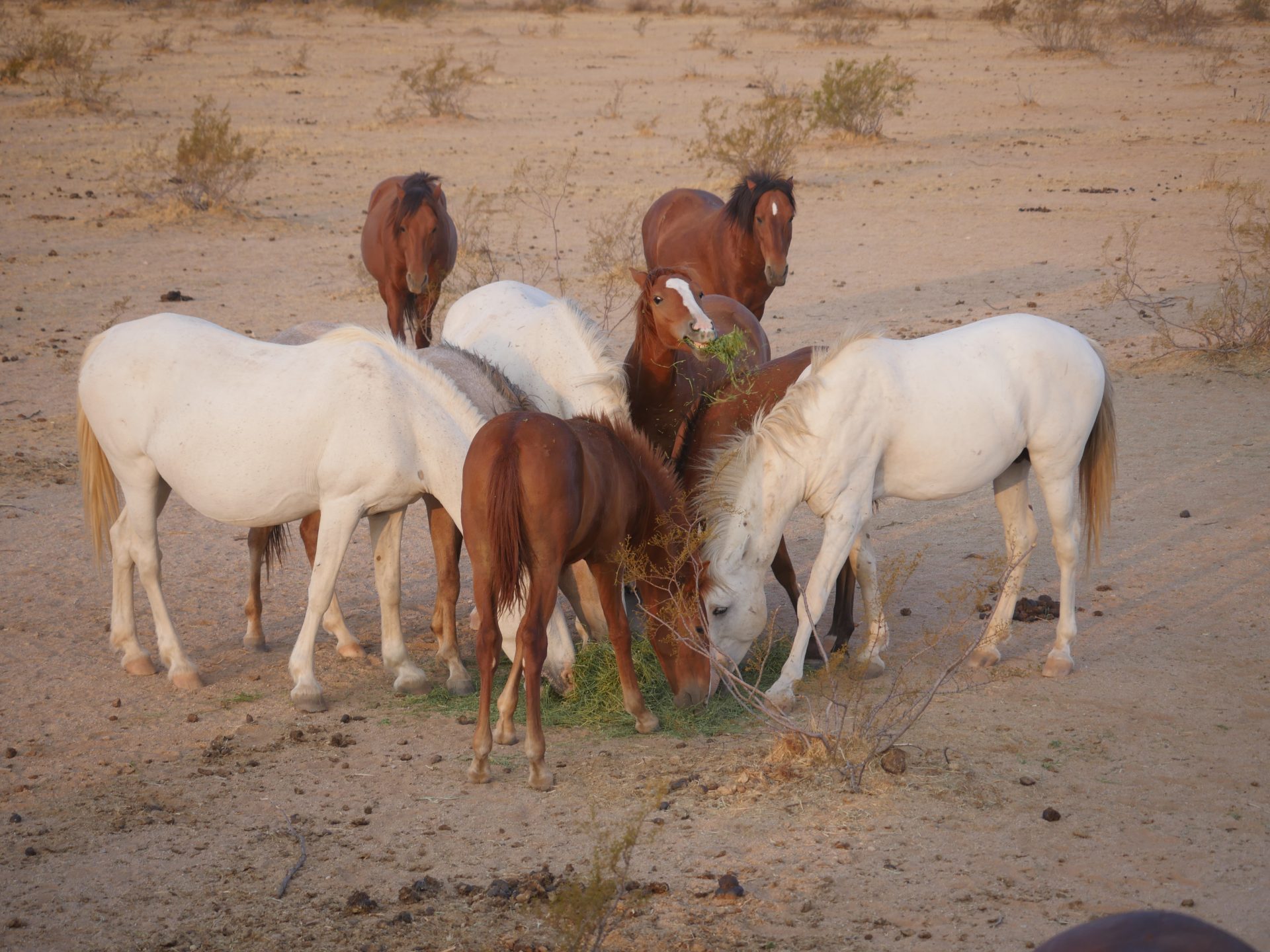
A wild horse in the middle smiles for the camera with its mouthful of hay.
Many in the Community might recognize the name Father Eusebio Francisco Kino. Father Kino was a Jesuit priest who traveled extensively and interacted with many tribes in this region. Father Kino brought seeds, cattle and horses from Veracruz north through Sonora and the American Southwest on his mission to convert the American Indians to Christianity.
“So, the horses we have [at SRPMIC] are descendants of those original Spanish barb horses. If you look at them, they’re not very tall. They’re about 14 to 14.2 hands high and 700 to 900 pounds,” said Gewecke. He pointed out that the wild horses might look small to us today in comparison to other horse types and breeds that we now see throughout the world, but the reasoning for the smaller horses is the shorter average height of the Spanish explorers and priests who rode them in the 17th century.
However, the wild horses here are not a pure Spanish barb, due to centuries of other horses being introduced in the area. It is said that the Pryor Mountains in Montana hold one of the few strains of horses verified by DNA analysis to be descended from the original horses brought over by the Spanish.
Currently the Community has an adoption program for the wild horses that it takes very seriously. When someone comes out and chooses a horse, they will have to keep it on what’s called a “trial ownership” for 12 months.
“During that time, I’ll come by and visit the new owner several times to make sure that the horse is happy in its new home and the new owner is happy with the horse,” said Gewecke. “If at any time during the first 12 months it’s not working out, we will take the horse back. We’re not trying to dump horses on people. We want these horses to go to good homes.”
Gewecke said that it costs about $100 per month to feed a horse, plus fees for the farrier (a specialist in equine hoof care) and vaccinations. By the time you’ve had that animal for 12 months, you have enough money invested into it that you’ll lose money if you take it to the sale barn.
With all of the care and love that goes into taking care of the wild horses, the CDD/EPNR Range Management staff remind you that if you see the horses, be respectful and let them be, as they are an integral part of the Community.

